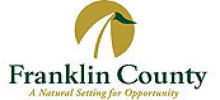Chattanooga Pairs Wireless with Wired
Chattanooga, with the nation's most impressive broadband network (stretching into rural areas even outside the metro), is spending $30 million to put a Wi-Fi wireless network on top of it. At present, it is primarily for municipal uses:

For now, city government plans to retain exclusive use of the network for municipal agencies as it tests it with applications including Navy SEAL-esque head-mounted cameras that feed live video to police headquarters, traffic lights that can be automatically adjusted at rush hour, and even water contamination sensors that call home if there’s a problem beneath the surface of the Tennessee River.Much of the wireless network is being funded by state and federal grants -- Chattanooga is turning itself into a test bed for the future city, at least for communities that recognize the benefits of owning their own infrastructure. Chattanooga can do what it wants to, it does not have to ask permission from Comcast or AT&T.
The goal for the city’s wireless network is to make the entire city more efficient and sustainable, said David Crockett, director of Chattanooga’s Office of Sustainability.As Bernie Arnason notes at Telecompetitor, Wi-Fi is increasingly needed by smartphones because the big cellular networks cannot handle the load. The future has wireless components, but without Wi-Fi backhauled by fiber-optics, the future will be extremely slow and unreliable -- traffic jams for smartphones. A more recent story from the Times Free Press notes that Chattanooga is wrestling with how to handle opening the network to residential and business use.

“I want to be innovative,” he said.



